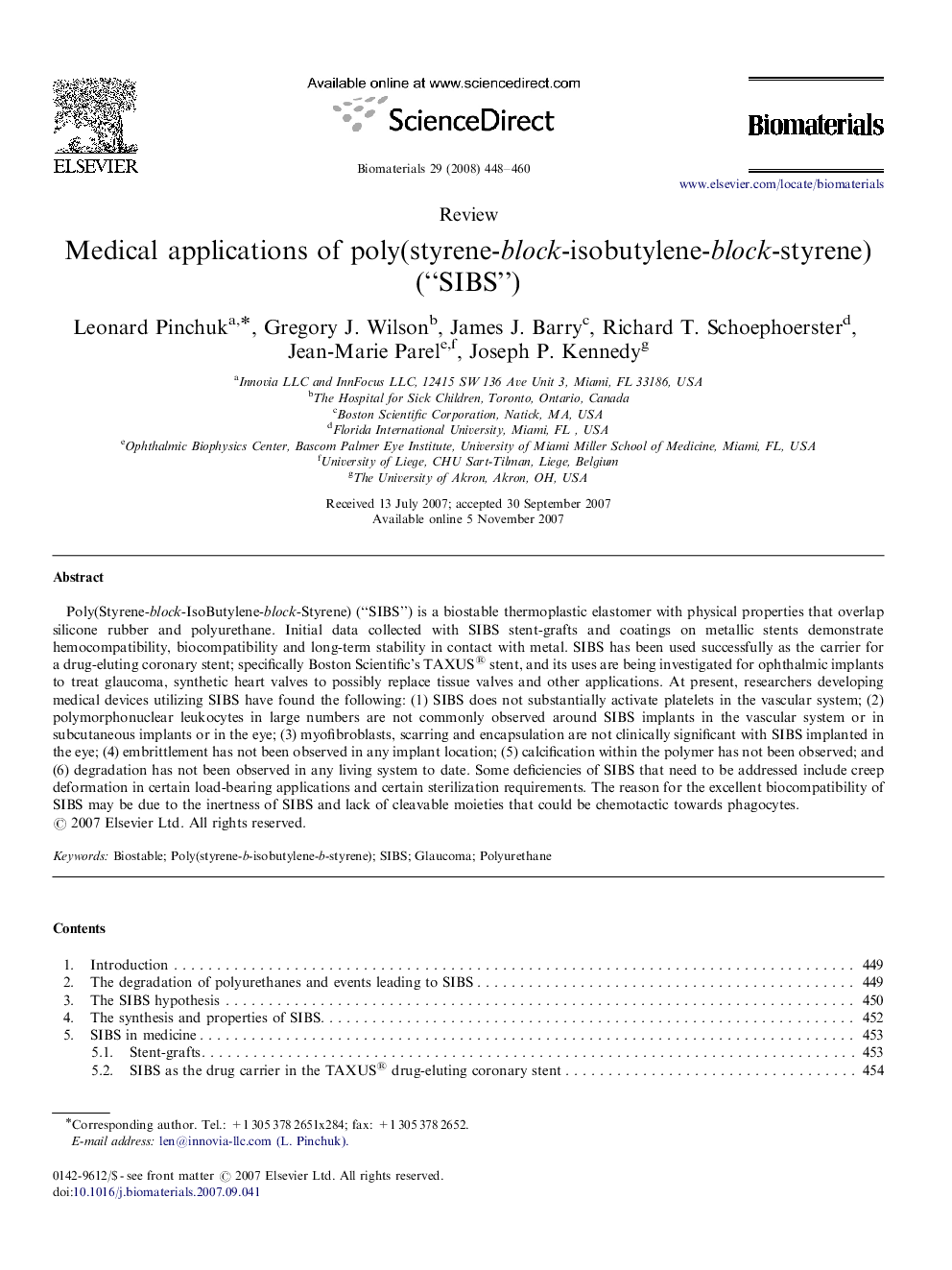| Article ID | Journal | Published Year | Pages | File Type |
|---|---|---|---|---|
| 10111 | Biomaterials | 2008 | 13 Pages |
Poly(Styrene-block-IsoButylene-block-Styrene) (“SIBS”) is a biostable thermoplastic elastomer with physical properties that overlap silicone rubber and polyurethane. Initial data collected with SIBS stent-grafts and coatings on metallic stents demonstrate hemocompatibility, biocompatibility and long-term stability in contact with metal. SIBS has been used successfully as the carrier for a drug-eluting coronary stent; specifically Boston Scientific's TAXUS® stent, and its uses are being investigated for ophthalmic implants to treat glaucoma, synthetic heart valves to possibly replace tissue valves and other applications. At present, researchers developing medical devices utilizing SIBS have found the following: (1) SIBS does not substantially activate platelets in the vascular system; (2) polymorphonuclear leukocytes in large numbers are not commonly observed around SIBS implants in the vascular system or in subcutaneous implants or in the eye; (3) myofibroblasts, scarring and encapsulation are not clinically significant with SIBS implanted in the eye; (4) embrittlement has not been observed in any implant location; (5) calcification within the polymer has not been observed; and (6) degradation has not been observed in any living system to date. Some deficiencies of SIBS that need to be addressed include creep deformation in certain load-bearing applications and certain sterilization requirements. The reason for the excellent biocompatibility of SIBS may be due to the inertness of SIBS and lack of cleavable moieties that could be chemotactic towards phagocytes.
